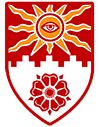A Place of Learning
In the heart of Buckinghamshire, two schools—each bearing its own legacy and challenges—stood as beacons of education in a time of religious and political upheaval. At the center of their foundations were the chantry priests, revered spiritual guides who played a pivotal role in the establishment and sustenance of these institutions.
St John the Baptist & St Thomas of Acon, a school born out of Matthew Stratton’s vision, received its lifeblood from priests of St Thomas of Acon since the late 13th century. Parallelly, the Buckingham Church School thrived under the patronage of John Barton the senior, also drawing its spiritual guidance from the same fraternity by 1431. Not too far away, the Thornton Church School, with the Bartons at its helm once more, had a tapestry of support—from the hallowed halls of All Souls College to the esteemed Lord of the Manor.

The record of William Abbott’s salary has Headmaster of the grammar school.
However, the wheel of time and the winds of change were not always kind. The year 1538 saw the Dissolution of St Thomas of Acon, which dried up the vital funds flowing to the Buckingham School. By 1553, the school found itself in private hands, grappling with financial strains as it sought to pay both its rent and the schoolmaster. A similar fate loomed over Thornton Church. Post the Reformation, the once-vibrant edifice showed signs of neglect by the 1580s, with its interiors shadowing its past glory.
As the years rolled on, a carousel of headteachers took the mantle. From William Abbott’s steady leadership of Thornton in the mid-16th century to John Kinge’s stewardship, honoring the legacy of the Ingleton/Barton chantry chapel. The alternating reigns of Anthony Gate and James Smith in the subsequent years bore witness to the ebb and flow of endowments between Thornton and Buckingham.
By the close of the 16th century, murmurs of a merger echoed in the corridors of power. The newly formed Burgesses of Buckingham, established in the early 1550s, sought the finest education for their heirs. Their aspirations led to the merging of the two Barton-founded schools, giving birth to the illustrious Royal Latin School. A blend of Thornton’s regal title, bestowed by Edward VI, and Buckingham’s infrastructure and students, it stood as a testament to adaptability and vision.
The merger didn’t go unnoticed. In 1603, two towering figures of the era, Thomas, Lord Buckhurst (known also as Sir Thomas Sackville) and the influential John Fortescue, stamped their approval on the union. With Fortescue’s deep connections to Buckingham, his hand in this historic merger was undeniable.
Thus, from the labyrinth of time, emerges the tale of Hasley Grammar School. A story where ambition meets adversity, where two schools, bound by a shared lineage and destiny, come together to forge a legacy for the ages.


